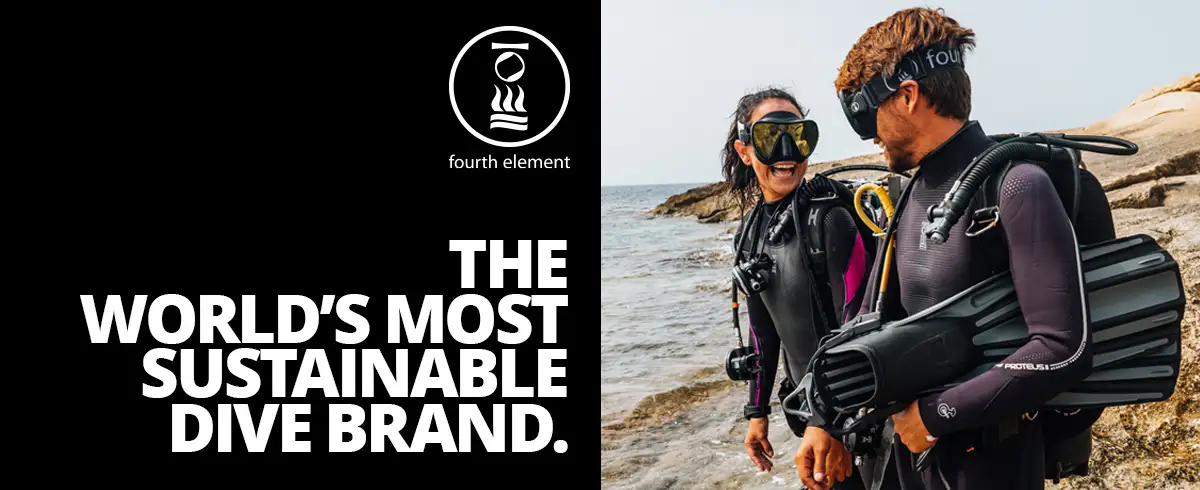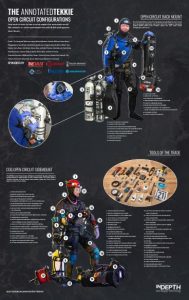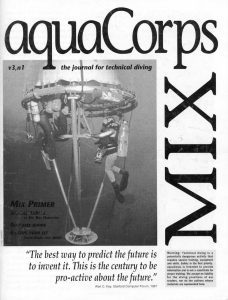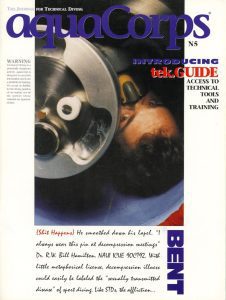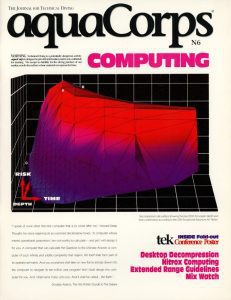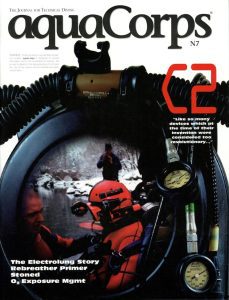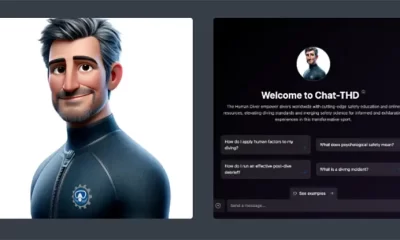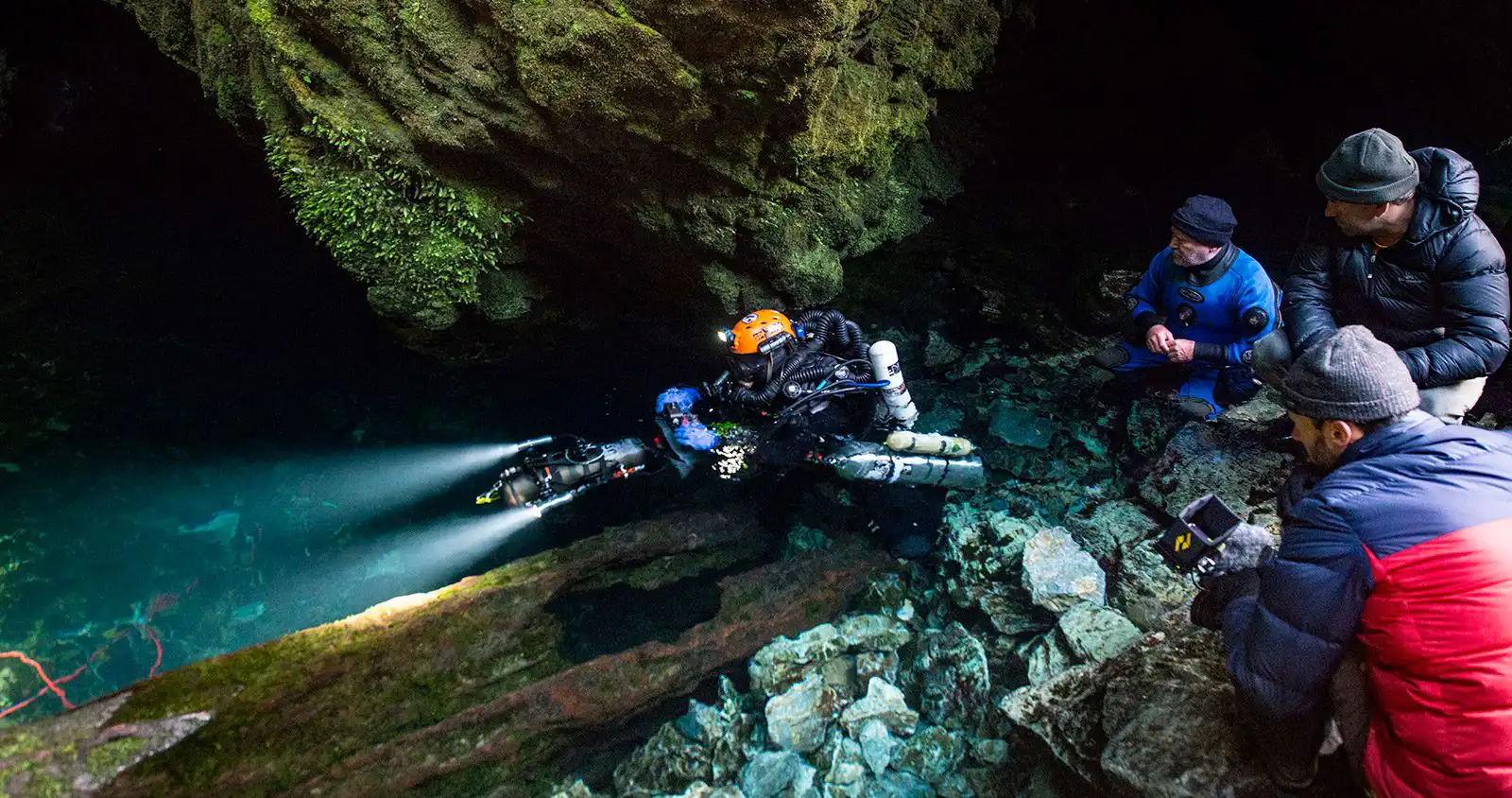

Latest Features
The Top Stories of 2023
We kick off the new year with 14-hand curated stories that we believe were our most important, engaging and or intriguing stories from 2023. Dive in!
By Michael Menduno. Header image: Richard Harris beginning his hydrogen dive at Pearse Resurgence, New Zealand. Photo courtesy of Simon Mitchell.
🎶 Predive Clicklist: Carry On Wayward Son by Kansas 🎶
Greetings Divers and Dive Pros,
Last year (2023) was an extraordinary year for technical diving. I would like to take a few minutes to review some of the most important developments that we reported on, and offer up InDEPTH’s 14 Top Stories of 2023.
Arguably the biggest story of the year, cave explorer Dr. Richard Harris aka Dr. Harry, and his Wet Mules team, conducted the first reported hydrogen rebreather dive—a dive that has been dreamed about in tech circles for more than 30 years. Though the jury is still out on its efficacy and safety, hydrogen may be the bridging technology to increase safety and performance, enabling tekkies to explore in the 250–350m/820–1148 ft range.
We held Rebreather Forum 4 in Valletta, Malta in April with 300 participants from the technical, scientific and military diving communities. The last Forum was held in 2012. As a result, we learned there are currently about 20,000–30,000 active rebreather divers, about twice the estimate in 2012, meaning only about one in ten tech divers owns a rebreather.
| January marks our fifth full year publishing InDEPTH. In 2023, we published 109 new stories, conducted seven surveys with the Business of Diving Institute and began publishing on five social media platforms. |
One of the major findings of the Forum was that rebreather diver safety has likely not improved since 2012; rebreather fatalities are estimated to be 2–4 deaths/100,000 dives or about 5–10X as risky as open circuit diving, similar to Dr. Andrew Fock’s findings at RF3. As of this writing there were at least 24 rebreather diving fatalities in 2023.
On a positive note, our understanding of what happens inside rebreather scrubbers, which until recently were literally “black boxes,” was greatly increased as the result of the work by retired scientific director of the US Navy Experimental Diving Unit, Dr. John R. Clarke, which was published in his monograph, “Breakthrough: Revealing the Secrets of Rebreather Scrubber Canisters.”
More developments! In what has been a long running debate, it was determined that oxygen is not narcotic in relevant tech diving ranges thanks to the work of New Zealand medical researcher and tech and cave instructor Xavier Vrijdag, who has developed a novel EEG algorithm that can detect the subtle effects of gas narcosis on the brain. Time to recalculate those ENDs!
It became very clear this year that sidemount diving has a substantial following among tech and even recreational divers and is growing rapidly. In fact, there are likely now more sidemount divers than cave divers or rebreather divers and multiple distinct systems on the market.
Once you go side, you’ll always dive wide?
There is also a slow moving crisis in the US, as an increasing number of hyperbaric chambers have decided to no longer treat divers, leaving fewer facilities available for divers in need, and increasing their post-dive time to treatment. What’s to be done is not yet clear.
Unfortunately, that’s not the only slow moving crisis—call it a disaster! Construction continued on Tren Maya, the intercity train line that is planned to traverse the Yucatán Peninsula, and threatens to destroy irreplaceable cenotes and degrade the second most important aquifer in Mexico.
Despite this environmental catastrophe, 2023 was a big year for cave exploration, with active exploration in China, Florida, France, Madagascar, Mexico, and Thailand. We reported on a variety of expeditions.
It was also a year for the broader community to think more about and debate the role of record setting in diving. Freediving suffered a doping scandal at William Trubridge’s Vertical Blue competition this year at Dean’s Blue Hole in the Bahamas, which InDEPTH contributor Charly Stringer reported on. Meanwhile French cave explorer Frédéric Swierczynski just claimed the new men’s deep cave diving record at 308m/1010 ft at Font Estramar in France, exceeding previous record holder Xavier Meniscus, who I interviewed in November. We offer several perspectives on record setting.
Like I said, it was a BIG YEAR for tech diving! Sadly, we also lost more tech diving pioneers and colleagues. May they Rest in Peace! 🙏
I would like to thank our subscribers and readers, for your continuing interest and support. We want to be your #1 source for advanced diving content and we will continue to work hard to win your loyalty! I also want to thank our many contributors from the global tech community, whose work and labors of love are represented here and elsewhere in InDEPTH. Thank you for your contributions!
Lastly, I want to thank our forward-thinking sponsors, who make InDEPTH possible! Please join me in giving a big shout out to; Area 9, Buddy Dive Resort, DAN, DAN Europe, Dive Rite, Divesoft, Extreme Exposure, Fathom Dive Systems, Fourth Element, Halcyon Dive Systems, Lombardi Undersea Research, Ocean Plan, O’Three, Scubapro, Shark Bite Scuba, Shearwater Research and XDEEP. Thank you!! We hope that you will support these depth full diving brands!
Please note that InDEPTH will be moving to its own website, InDEPTHmag.com, in the coming month to better serve you. Rest assured, we have some exciting stories planned for 2024, so get out your checklists and get ready to DIVE IN!
Safe diving,
Michael Menduno/M2
Editor-in-chief
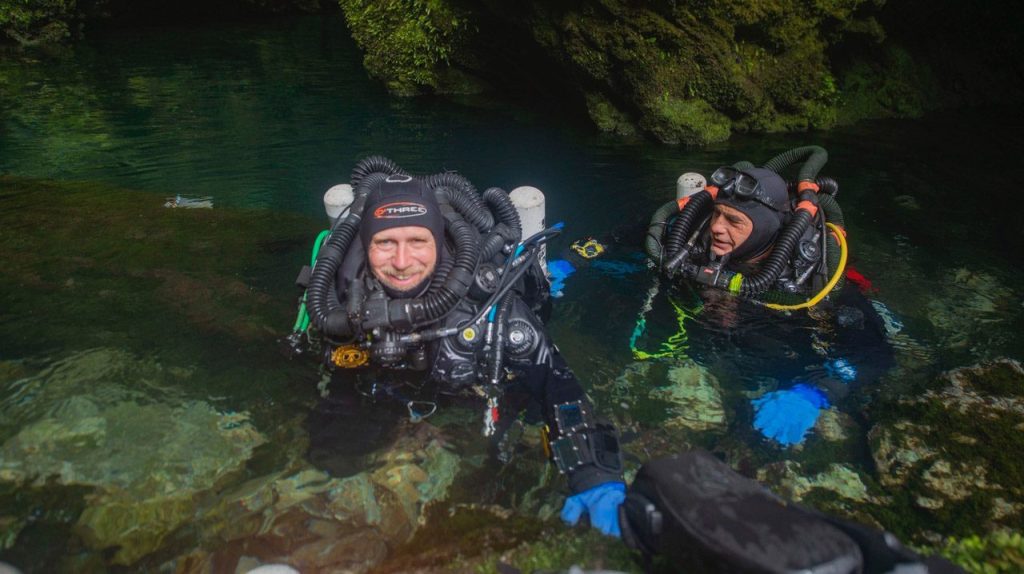
1. Hydrogen, at Last.
In February, Dr. Richard Harris aka Dr. Harry and the Wet Mules conducted the world’s first hydrogen rebreather dive to a test depth of 230m at Pearse Resurgence, New Zealand. The purpose of the 13 hour dive was to determine the practicality and efficacy of using hydrogen to improve safety and performance of über-deep scuba dives. Harris will present the work up and details of the dive at Rebreather Forum 4 in Valletta, Malta on 22 April. In preparation, we thought it useful to review some of the history and research regarding hydrogen diving.
And be sure to check out how the dive came out: N=1: The Inside Story of the First-Ever Hydrogen CCR Dive

2. Has Rebreather Diving Gotten Safer?
The view among many industry insiders, Pre-RF4, was that rebreather diving has gotten safer—an improvement from the estimate that CCR divers were 5–10x more likely to die than their open circuit counterparts, which was put forth at RF3 (2012). Afterall, aren’t most people doing their pre-dive checklists? Based on the most comprehensive analysis to date conducted by DAN research director Frauke Tillmans, safety has not improved that much from RF3, as InDEPTH editor Ashley Stewart explains. The rebreather community clearly has more work to do!
Also see: Rebreather Forum 4 Yields CCR Market Data and Consensus Statements
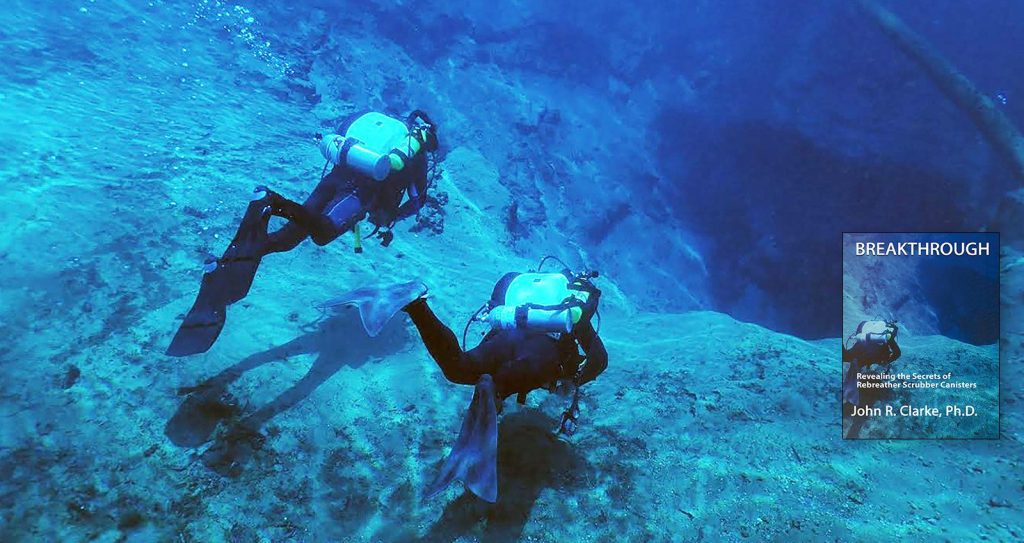
3. The Secrets of Scrubbers
Dr. John Clarke’s geeky new monograph on the inner workings of rebreather scrubbers represents the culmination and synthesis of more than three decades of Naval research, as well as the personal research of the retired scientific director of the Navy Experimental Diving Unit (NEDU) into stochastic systems. As such, it is arguably a MUST READ for serious rebreather users. Here marine scientist and rebreather instructor Jeffrey Bozanic dives into some of the important details of Clarke’s book and the operational questions it seeks to answer. Feed your head!

4. Is Oxygen Narcosis A Thing?
There’s been a long running debate as to whether oxygen is a narcotic diving gas. Training agencies CMAS, GUE, PADI and PSAI include O2 in their equivalent narcotic depth (END) calculations. Others like BSAC, IANTD, NAUI and TDI do not. The problem has been reliably measuring gas narcosis. Enter medical researcher and tech instructor Xavier Vrijdag, who has developed a novel EEG algorithm that can detect the subtle effects of gas narcosis on the brain. His results promise to lead to a deeper understanding of gas narcosis. Hint: Nitrox divers can breathe easy; it’s less narcotic than air!
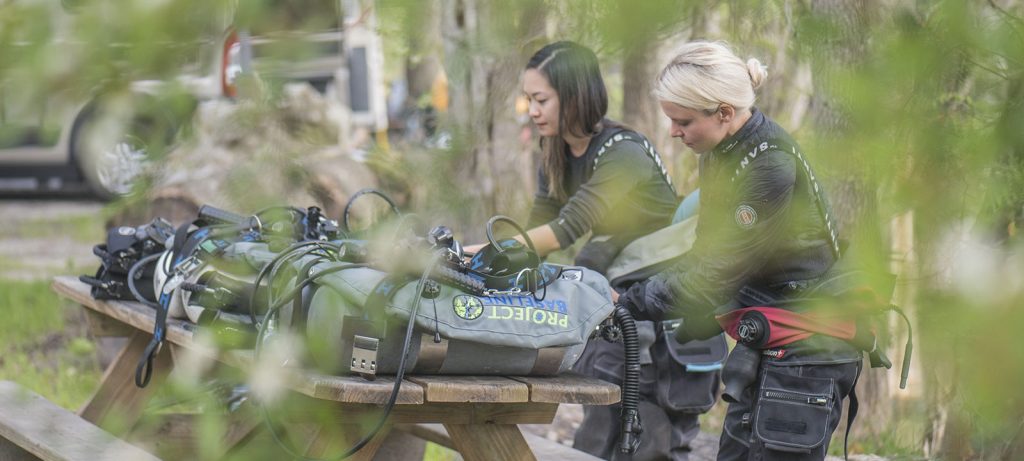
5. Tekkie la femme
Floridian cave diver, artist and picture maker Bori Bennett helps us celebrate the feminine side of karst culture for International Women’s Day.
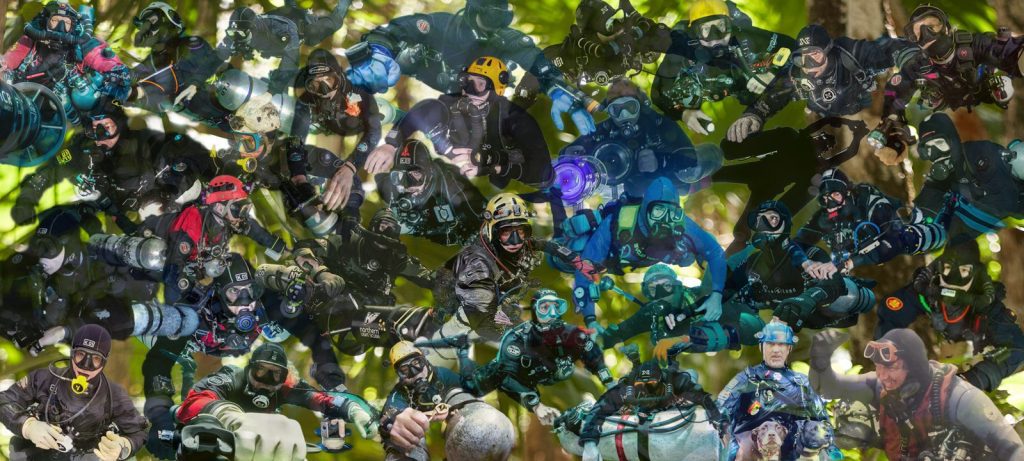
6. The Who’s Who of Sidemount
Stories are at the heart of diving culture. Accordingly, we asked over 30 internationally recognized explorers, educators, engineers, pioneers and producers, who have each made significant contributions to sidemount diving, to share their stories. And what stories they are! Interviews by Stratis Kas and Michael Menduno.
Also check out our dive into sidemount world: Configure Me This: The Annotated Sidemounter with guest editors Steve Davis and Stratis Kas.

7. Hyperbaric Chambers Are Turning Away Divers. Will There Be One Nearby When You Need It?
Unfortunately, it’s hard to make a business case for treating divers versus wound and burn care victims. As a result, many hyperbaric chambers in the U.S no longer treat divers, leaving fewer facilities available for divers in need and increasing their post-dive time to treatment. InDEPTH editor Ashley Stewart reports on this growing crisis in the US and what can be done!

8. Tren Maya is on the Wrong Track – An Update
Tren Maya, the intercity train route traversing the Yucatán Peninsula threatens to wreak havoc on the rainforest, the underlying aquifer and the cenotes, as construction continues. Here Alessandra Figari, Elias Siebenborn, Roberto Rojo, and Guillermo D. Christy provide an update, including a new video of the impacts to date.

9. The Taming of the Slough: Crypt Edition
Rumors of a deep connection between the Crypt, a collapsed tunnel in Peacock Springs discovered by Sheck Exley in 1975, and lower Orange Groove, both located in Wes Skiles Peacock Springs State Park, Florida, only served to entice explorer Steve Lambert, who was determined to find the truth, after his team’s success extending Peacock III. Here is his story featuring a well-known cast of underground characters including Woody Jasper, Frank McNamara, Andrew Johnson, Thai Paul and greybeard Paul Heinerth who were involved in the find. Scoop that booty!

10. The Aftermath Of Love: Don Shirley and Dave Shaw
Our young Italian poet-explorer Andrea Murdoch Alpini makes a pilgrimage to visit cave explorer Don Shirley at the legendary Bushmansgat cave in South Africa. In addition to guiding the author through the cave, Shirley and Alpini dive into history and the memories of the tragic loss in 2005 of Shirley’s dive buddy David Shaw, who died while trying to recover the body of a lost diver at 270 m/882 ft. The story features Alpini’s short documentary, Komati Springs: The Aftermath of Love.
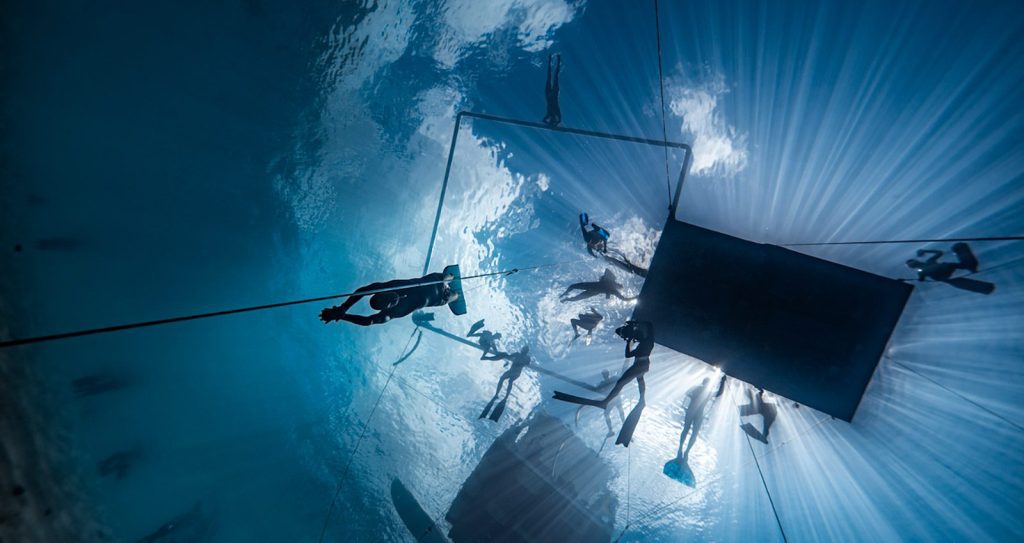
11. Doping for Depth
With the breath-hold community reeling after the alleged doping scandal at this year’s Vertical Blue competition, we thought it important to understand what exactly constitutes doping in freediving, its prevalence in competition, and the potential risks to athletes. Dahab-based writer and freediver Charly Stringer consults with the experts to deliver her report. Here’s what you need to know.

12. I Trained “Doc Deep”
Numerous divers have died trying to break scuba depth records over the years, and the losses continue. Their deaths not only impact their families, friends and their support teams, but the diving community as a whole, as technical diving instructor Jon Kieren knows first hand. He was Guy Garman’s aka “Doc Deep,” first tech instructor and friend, who ultimately tried to dissuade Doc from attempting his 2015 dive to 365m/1198 ft, which proved fatal. Here is his story.

13. The Risk and Management of Record Chasing
The pursuit of deep diving records is an unsettling but accepted facet of tech diving culture. On the one hand, we are driven as a species by our genetic predisposition to “Go Where No One Has Gone Before.” Blame it on our DRD4-7R explorer gene! On the other, many question the value and legitimacy of conducting a high risk, touch-and-go line dive for recognition and bragging rights alone. Where and how do we reconcile the two? Here diving physiologist Neal Pollock seeks to answer those questions in a compelling, principled exposition that may help you to sharpen your beliefs.
And to add a bit of trending tech frivolity to the MIX (where is SHITWRECKS when you need it?)…..
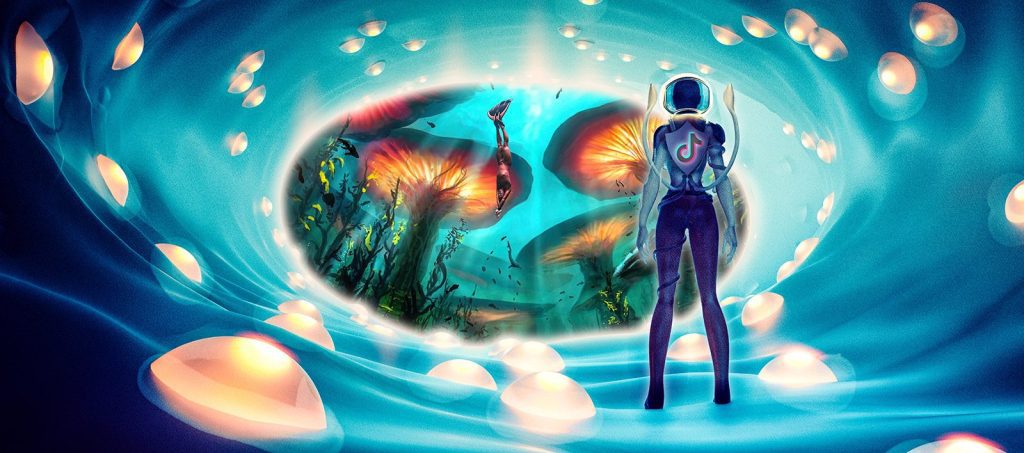
14. Dive Into Tik Tok
Intrepid u/w content creator Devina Wijaya takes us for a dive into TikTok.
Here is the complete set of Rebreather Forum 4 (Video) Presentations
DIVE DEEPER
InDEPTH: The Top Stories of 2022
InDEPTH: Top Tech Stories of 2021
InDEPTH: Our Most Read Stories of 2020
InDEPTH: The Best of InDepth in 2019
DOWNLOADABLES
InDEPTH: Annotated Tekkie posters. These posters can be downloaded and printed at a local print shop or saved as PDFs.
aquaCORPS #4 MIX was published in JAN92 just before the “Enriched Air Nitrox Workshop,” held prior to DEMA in Houston, Texas. The MIX issue focused on mixed gas technology. It was also the first issue of aquaCORPS that included the tagline, “The Journal for Technical Diving,” a moniker coined by founder and publisher Michael Menduno in 1991. Sponsored by DeeperBlue, Dive Rite, Fourth Element and Global Underwater Explorers
aquaCORPS #5 BENT was published in JAN93 in conjunction with the first technical diving conference, tek.93, held just before the annual DEMA show in Orlando, Florida. The issue focused on decompression illness (DCI) and presented the latest thinking on the theory, classification, treatment, and human factors associated with DCI. Sponsored by DAN Europe.
aquaCORPS #6 COMPUTING was published in JUN93 following aquaCORPS’ first technical diving conference, dubbed tek.93, held in Orlando, Florida in January of that year. The issue focused on dive computing and included interviews with nitrox computer developers Randy Bohrer (Bridge), Kevin Gurr (ACE), Paul Heinmiller (Phoenix), an interview with Karl Huggins (EDGE), and a story about commercial decompression software developed by decompression engineer, JP Imbert. There was also a review by Dr. Bill Hamilton and John Crea, of four desktop decompression programs that had recently been launched in the tech diving market. Sponsored by Shearwater Research!
aquaCORPS #7 C2 (Closed Circuit) was published in January 1994 just prior to the 1994 tek.Conference and DEMA show held in New Orleans, LA. The issue focused on rebreather technology, and we planned it as a primer in anticipation of aquaCORPS Rebreather Forum, scheduled to be held in Key West, FL that coming May. At the time, there was only a few dozen rebreather in the hands of sport divers. Sponsored by Divesoft

